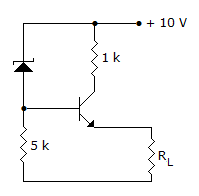ECE :: Analog Electronics
-
FET can used in
-
The circuit in figure is

-
A two stage amplifier has an upper cutoff frequency of 2 MHz and a lower cutoff frequency of 2 MHz and a lower cut off frequency of 30 Hz. If both stages are similar, their individual upper and lower cut off frequencies respectively are
-
A bipolar transistor is a __________ controlled devices whereas a FET is a __________ controlled devices.
-
In a N-P-N transistor of the emitter junction is reverse biased and collector junction is also reversed biased, the transistor will operate in
-
Wide banding technique is employed in the
-
Assertion (A): The maximum efficiency of a class B push pull amplifier is 78.5%
Reason (R): A current mirror uses a compensating diode in parallel with the emitter diode


 Whatsapp
Whatsapp
 Facebook
Facebook

